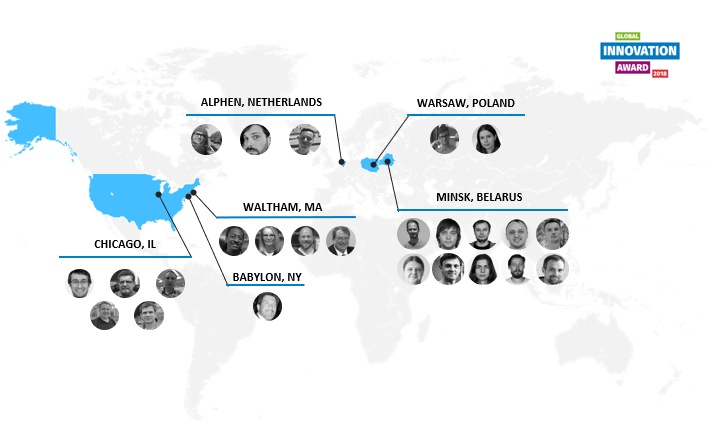The TaskFlow platform allows experts to focus on content creation in an easy-to-use, feature-rich interface. Currently, interactive content using TaskFlow is being developed within Wolters Kluwer Health, Tax & Accounting, and Legal & Regulatory divisions. The winning team behind TaskFlow saw an opportunity to reduce the cost and time of content creation by up to 60 percent, helping our experts better serve our customers.
Learn how one GIA winner is changing the landscape of predicting workplace fatalities.
Hear from the team – Anne Travis, MD, Senior Director Advanced Clinical Decision Support – Editorial, and Evgeniy Polodyak, Principal Application & Produce Architect, GPO PS Development:
How does TaskFlow innovate content?
Anne: The real innovation is that TaskFlow doesn’t require technical experts or programmers to create interactive content because it uses a visual programming platform which makes it easy for us to work as editors.
Evgeniy: We have developed a concept called visual programming. It basically helps non-technical people who are subject matter experts, create interactive content. The platform can support different formats such as interactive forms, video presentations, voice conversations.
How far are you in the process?
Evgeniy: We have completed migrating all the UpToDate Pathways support content, which belongs to our clinical decision support resource, into TaskFlow. It’s interactive content, so it was more like converting it from one programming language to another. We successfully launched in September 2019. We’re also working with a couple of other teams, like those who create content for our Emmi solution, a multimedia patient engagement platform, to launch another delivery to customers in the coming months. We’ve also extended TaskFlow as a platform which has made it easier to onboard new business units, because it’s our goal to make it scalable for more applications.
It’s very impressive that TaskFlow is associated with a 60 percent reduction in costs and time it takes to create content. How did you go about measuring or thinking about the impact of this innovation?
Anne: I would say it’s incredibly important in the process to look at the impact of your solution when it comes to things like cost and other metrics that may be important in your particular area. With our old system the editors had to learn how to do some basic programming which tended to be very slow and inefficient. And because we aren’t experienced programmers we would frequently make mistakes. With TaskFlow we’re not worrying about how to program because it’s really simple and visual. We also have a reviewer system so that we can communicate easily with our contributors. Those are the things that have helped speed up content creation.


